
Scientific Collaboration For Technological Innovations
DIERS maintains an intensive exchange of scientific knowledge with several research institutes and industrial partners to develop innovative products at a high technical and scientific level which are optimally adapted to the needs of patients and users.
Current Research Projects
AiPosture
„AiPosture»:
Torsobarography of the future
In cooperation with: TU Dresden, Institute for Biomedical Engineering (IBMT)
Duration: 01.10.2024 – 30.09.2026
Note: The project participant is not DIERS itself, but the company EVOSENSE, which is affiliated with us.
Funded by: Federal Ministry of Education and Research (BMBF)
Funding measure: Model project industry-in-clinic platform FTMT
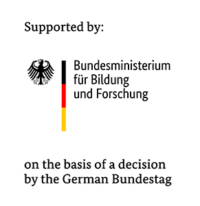
BelEx
„BelEx»:
Real-time determination of the real 3D force and moment components of the lower musculoskeletal system using an innovative machine learning model from markerless determined support and joint points in the lower extremities and hip
In cooperation with: University of Koblenz
Duration: 01.08.2024 – 31.01.2027
Funded by: Federal Ministry for Economic Affairs and Energy (BMWi)
Funding measure: Central Innovation Program for SMEs (ZIM)
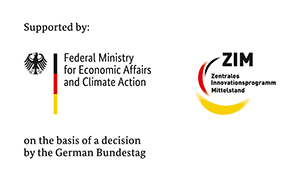
AIMECA
SineXPlain
„AIMECA – SpineXPlain»:
Artificial intelligence in medical care, development of a software suite for diagnostic support in back pain based on an explainable pathology-independent classification
In cooperation with: Rhineland-Palatinate University of Kaiserslautern, Mainz University Medical Center
Duration: 01.04.2024 – 31.07.2027
Note: In this case, the project participant is not DIERS itself, but the company docLifecare, which is affiliated with us.
Funded by: Federal Ministry of Economics and Climate Protection (BMWK)
Funding measure: Central Innovation Program for SMEs (ZIM)

FACErehab
„FACErehab»:
Home-based EMG biofeedback training for patients with facial nerve paralysis – Interactive rehabilitation in the patient environment
In cooperation with: University Hospital Tübingen, Neurosurgery and Neurotechnology (CIRAS)
Duration: 01.01.2024 – 31.12.2026
Note: The project participant is not DIERS itself, but the company EVOSENSE, which is affiliated with us.
Funded by: Federal Ministry of Education and Research (BMBF)
Funding measure: Research program on interactive technologies for health and quality of life: “Together through innovation”
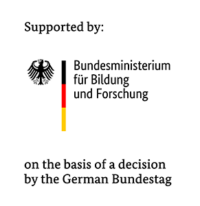
ZEREPRO
DYBASYS
„ZEREPRO – DYBASYS»:
Development of a novel diagnostic tool for the biomechanical analysis of ascending and descending symptoms in cranio-mandibular dysfunction
In cooperation with: Rostock University Medical Center (UMR) Research Laboratory for Biomechanics and Implant Technology
Duration: 01.10.2023 – 31.03.2026
Funded by: Federal Ministry of Economics and Climate Protection (BMWK)
Funding measure: Central Innovation Program for SMEs (ZIM)

MOROBA
„MOROBA»:
Modular assistance system to support care and therapy
In cooperation with: RWTH Aachen University, Institute for Applied Medical Technology (RPE)
Duration: 01.06.2023 – 31.05.2026
Funded by: Federal Ministry of Education and Research (BMBF)
Funding measure: Model project industry-in-clinic platform FTMT

IKARUS
„IKARUS»:
Intelligent camera-based rehabilitation and sports therapy
In cooperation with: TU Dresden, Institute of Biomedical Engineering (IBMT), Kielce University
Duration: 01.04.2023 – 31.12.2025
Note: In this case, the project participant is not DIERS itself, but the company EVOSENSE, which is affiliated with us.
Funded by: Federal Ministry of Economics and Climate Protection (BMWK)
Funding measure: Central Innovation Program for SMEs (ZIM)

Completed Research Projects
Torbi
„Torbi»: The intelligent diagnostic mat
In cooperation with: Dresden University of Technology
Duration: 01.04.2021 – 31.03.2023
Funded by: Federal Ministry of Education and Research (BMBF)
Funding measure: Central Innovation Program for SMEs (ZIM)

PfleKoRo
„PfleKoRo“: Facilitating care through cooperative robotics
In cooperation with: Martin Luther University Halle-Wittenberg, RWTH Aachen University, Aachen University Hospital
Duration: 01.02.2020 – 31.01.2023
Funded by: Federal Ministry of Education and Research (BMBF)
Funding measure: Robotic systems for nursing care

R2WS
„R2WS“: Patient-specific analysis of the spine
In cooperation with: RWTH Aachen University, University Hospital Aachen
Duration: 01.02.2019 – 31.07.2022
Funded by: Federal Ministry of Education and Research (BMBF)
Funding measure: KMU-innovativ medical technology

Smart Health
MyPhysio
„Smart Health – MyPhysio“:
Hardware development and system integration for a system to perform physiotherapy exercises at home
In cooperation with: Ulm University of Applied Sciences
Duration: 01.02.2020 – 30.07.2022
Funded by: Federal Ministry for Economic Affairs and Energy (BMWi)
Funding measure: Central Innovation Program for SMEs (ZIM)
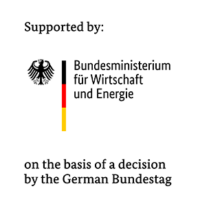
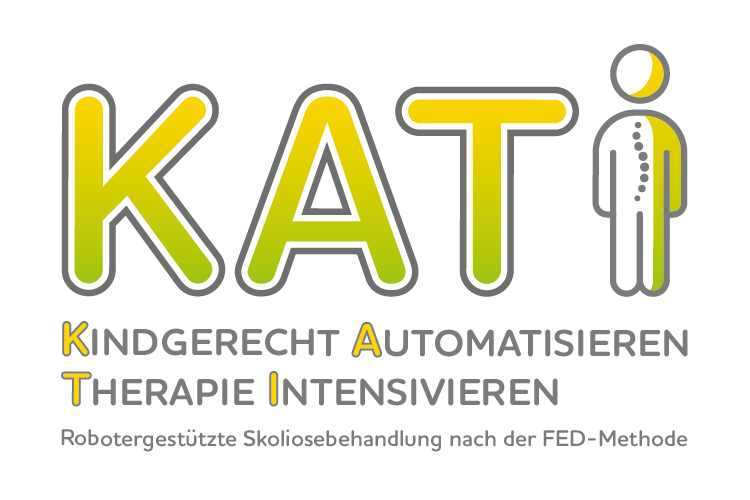
„KATi:
Child-friendly automation – Intensifying therapy”
Robot-assisted scoliosis treatment for children
In cooperation with: Jena University Hospital, Dresden University of Technology, Evosense GmbH
Duration: 01.05.2019 – 31.10.2021
Supported by: VDI Technology Center
Funded by: Federal Ministry of Education and Research (BMBF)
Funding measure: KMU-innovativ medical technology

The aim of the research project was to verify and validate concepts for the child-friendly design of medical devices using the example of a therapy robot for the treatment of adolescent scoliosis. Central design aspects were developed in workshops with patients from a Polish rehabilitation clinic. Methods for cooperation between engineers, therapy scientists and designers with the young patients were applied in practice. The young people’s understanding and perception of the therapy was surveyed and documented. The results were used to derive design criteria for the development of a child-friendly therapy robot for scoliosis treatment.
The project team’s approach was to involve the young patients in the design process right from the start. After all, as those affected, they are best placed to articulate their needs themselves. Research questions were formulated in advance and translated into age-appropriate tasks.
The experience gained from the research project was compiled in a brochure as an inspiration and guide for engineers and product designers who also want to take on this challenge.
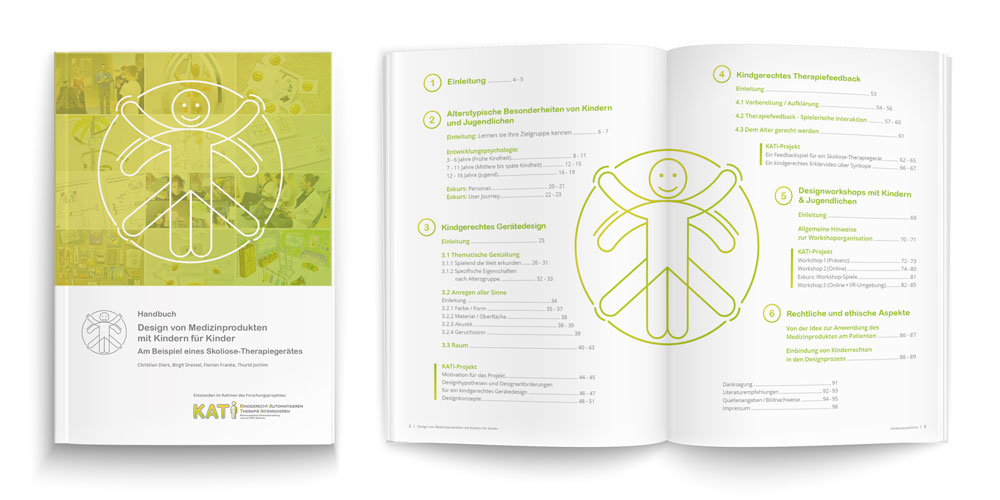
Please note: The brochure is currently only available in German
DemaPro
„DemaPro“:
Development of new materials and nanocomposite structures for an innovative modular prosthesis to preserve the functionality of the upper extremity
In cooperation with: RWTH Aachen University, Research Center for Advanced Materials, S.C. (CIMAV) in Nuevo León, México.
Duration: 01.03.2018 – 31.08.2021
Funded by: Federal Ministry of Education and Research (BMBF)
Funding measure: IB-AMERICA, in the funding area: 2 + 2 projects with Mexico 2016

Volume model
„Volume model“:
Dynamic surface volume measurement system for the upper body including an analysis of the spinal segmental force component
In cooperation with: Institute for Medical Technology and Information Processing University of Koblenz Landau
Duration: 01.12.2018 – 30.05.2021
Funded by: Federal Ministry for Economic Affairs and Energy (BMWi)
Funding measure: Central Innovation Program for SMEs (ZIM)

FEDi
„pro-O-light – FEDi“:
3D scanner for body measurement of patients and prototype construction
In cooperation with: Dresden University of Technology
Duration: 01.10.2018 – 31.03.2021
Funded by: Federal Ministry for Economic Affairs and Energy (BMWi)
Funding measure: Central Innovation Program for SMEs (ZIM)

autoPräz
„autoPräz“:
Assistance system to support patient-autonomous precision rehabilitation of musculoskeletal diseases
In cooperation with: RWTH Aachen University, University Hospital Aachen, University Hospital Mainz
Duration: 01.03.2018 – 29.02.2020
Funded by: Federal Ministry of Education and Research (BMBF)
Funding measure: Model project “Industry-in-clinic platform MEC-ABC

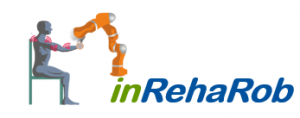
«inRehaRob»:
Individualized rehabilitation therapy through self-adapting robotic assistance
The ability to move independently is the basis for a person’s ability to act. Movement disorders and functional movement restrictions, which occur primarily in cases of damage to the central nervous system, cause pain and often hinder and make it difficult to carry out even everyday activities. The loss of quality of life associated with restricted mobility, as well as the associated costs to the healthcare system and the economic damage caused by possible occupational disability, require innovative approaches to maintaining or restoring the ability to move.
The most prominent example of this is stroke patients whose inpatient rehabilitation lasts for months and who subsequently require lifelong physiotherapy. In Germany alone, around 270,000 people suffer a stroke every year.
Exercise therapy must be adapted to the patient’s acute condition at short notice at all times. The aim of the proposed project is therefore to create a self-adapting, robotic assistance system that enables patients to practice movements independently at any time, individually adapted to their acute needs, and thus leads to an increase in the efficiency and continuity of stroke therapy.
In cooperation with: KUKA Laboratories, Dr. Becker Klinikgruppe, EvoSense, Institute for Control Engineering at RWTH Aachen University, Rehabilitation and Prevention Technology Department at RWTH Aachen University
Duration: 01.04.2016 – 31.03.2019
Funded by: Federal Ministry of Education and Research

iSAM
„iSAM“:
Intelligent sensors for balanced muscles
The diagnosis and treatment of muscular functional deficits is part of everyday life in orthopaedic rehabilitation. Isometric force measurement is the best non-invasive tool for objective diagnosis and progress monitoring. Systems from Germany are among the most modern. The reliability of these systems is limited by variations in movement and the diagnostic potential is far from exhausted. Advances in the field of EMG have paved the way for innovative applications. This is where the iSAM project comes in, combining the diagnostic capabilities of isometry and EMG, embedding them in a biomechanical model and linking them to an expert system. The innovative core of the iSAM project is the differentiated force measurement of individual muscles. The concept focuses on two aspects at once: increasing reliability and diagnostic potential. This is made possible by the monitoring of muscle coordination and the differentiated functional analysis of individual muscles.
In cooperation with: Institute for Biomedical Engineering TU Dresden
Duration: 01.01.2016-31.12.2017
Funded by: Federal Ministry for Economic Affairs and Energy (BMWi)
Funding measure: Central Innovation Program for SMEs (ZIM)

3K platform
„3K platform“:
Development of a pressure sensor platform for recording three-dimensional impact forces for clinical and biomechanical analysis
In clinical gait analysis, pressure platforms that can only record vertical forces are usually used to record ground reaction forces. However, for the calculation of moments, and more importantly of shear and rotational forces, horizontal forces should also be taken into account, which is not possible with the systems available on the market. The aim is therefore to develop and test a measuring system for recording pressure distributions under the foot, in which forces are distributed over a wide area and recorded in all three spatial planes. The technical solution developed for this was the construction of a new type of array of networked, miniaturized, mechanical force sensors for high-resolution (2 sensors per cm²) multidimensional force and torque measurement.
In cooperation with: Institute of Sport and Sport Sciences, Albert-Ludwigs-University Freiburg
Duration: 01.07.2014 – 31.12.2015
Funded by: Federal Ministry for Economic Affairs and Energy (BMWi)
Funding measure: Central Innovation Program for SMEs (ZIM)

«SCOLIO-SEE» is a software and hardware system that, for the first time, will combine the data obtained by both radiographic and surface topography techniques.
This matching between internal and external deformation will permit monitoring spine curvature evolution after treatment by analyzing only surface changes, reducing the number of radiographs needed to a level that it is not harmful for the patients. Additionally, a software module will be developed to compare the 3D images taken for each individual patient in two successive visits, to show the 3D-changes occurred in the whole back surface occurred in this time interval.
Four important research organisations will develop the Scoliosee research project and other four companies will guide the researchers to achieve the best results on the research. From their side, researchers will provide SMEs with valuable intellectual property generated during the project research.
In Cooperation with: Aristotelio Panepistimo Thessaloniki (Greece)
Duration: 01.10.2012 – 30.07.2015
Funded by: European Union
Funding measure: 5th Framework Program

Diabetic Foot

„Diabetic Foot“:
Telemedical monitoring system for the prevention of diabetic foot problems
Diabetes has become a widespread disease internationally. The aim of the project was to develop an inexpensive system for monitoring diabetic foot syndrome for the home market and clinics, which can be purchased by the majority of the population with diabetic foot syndrome.
In addition to the measuring equipment, image processing and transmission were of great importance during development. Every user should be able to take a photographic image of their feet from below (plantar) in their home environment on a daily basis. The device was designed in such a way that the positioning of the feet and legs can be easily repeated. The quality of the images ultimately also depends on a small deviation / scattering of the foot position. All positioning requirements were fulfilled excellently.
In addition to the mechanical foot holding device, an inexpensive hardware and software solution was developed for the camera setup. With a camera integrated into a processor board, a high-quality solution for image acquisition and processing was realized. An image transmission module was completely developed and integrated..
In cooperation with: Fraunhofer Institute for Manufacturing Engineering and Automation IPA
Duration: 01.07.2013 – 31.12.2015
Funded by: Federal Ministry for Economic Affairs and Energy (BMWi)
Funding measure: Central Innovation Program for SMEs (ZIM)

Sleep Mask
“Sleep mask»:
Development of automated patient-specific mask fitting in the sleep laboratory
The technological development will improve the quality of care for sleep laboratory patients by increasing the accuracy of fit of the masks on the patient. All of the patient’s conditions are taken into account (standing, sitting, walking, running, sleeping, etc.).
Until now, masks were only fitted to the shape of the face manually under static conditions and often led to contact and leakage problems during sleep, for example, which reduced the quality of patient care.
Thanks to the development of a measuring technique with the option of static and dynamic 3D measurement, the coordinates of the corresponding field of vision can be precisely recorded in order to optimize the selection and testing of masks for accuracy of fit.
Dynamic measurement and image capture in the invisible light spectrum are new features. This makes it possible to take measurements without disturbing the patient.
In cooperation with: Advanced Sleep Research GmbH, Sleep Laboratory of the Charité Berlin
Duration: 01.07.2011 – 31.12.2013
Funded by: Federal Ministry of Economics and Technology (BMWi)
Funding measure: Central Innovation Program for SMEs (ZIM)

Insoles
„Insoles“:
Integration of the latest biomechanical measurement methods and medical-orthopaedic expert knowledge in the selection and design support of orthopaedic foot orthoses
The aim of the project was to develop and evaluate a measurement method that can be used to assess postural corrective measures as part of the recording of postural data. In the context of pain symptoms in the back area, the cause is now being discussed using more multimodal approaches. This means that the cause of the pain does not necessarily have to originate from the region from which the pain is felt. There are now reports that the cause of back pain is muscular tension in the facial muscles. This is based on the assumption that increased muscle tone in the jaw muscles results in a mechanical change in the upper spine. Due to the muscle loops and the synergistic and antagonistic interaction of the muscle groups, this possibly negative overtension can continue. Studies have shown that there are connections between the craniomandibular system, the craniocervical system and the area of the lower spine and pelvis. These findings, also known as cranio-mandibular dysfunction (CMD), suggest that by changing the mechanics of the temporomandibular joint, e.g. by using a bite aid, it is also possible to influence pain symptoms in the spine.
In cooperation with: Sports Medicine Tübingen, Eberhard-Karls-University Tübingen
Duration: 01.09.2007 – 28.02.2009
Funded by: Federal Ministry of Economics and Technology (BMWi)
Funding measure: PRO INNO II funding program

Training Therapy
“Training therapy»:
Development of a PC-supported consultation system for medical, diagnostic training therapy in orthopaedics
The novelty of the development is that the measurement data relating to posture and physical strength are systematically analyzed and, using the expert knowledge of the scientific staff at the University of Hamburg, result in patient-specific training plans. DIERS has developed new software programs for these training plans. The new software makes it possible to have computer-based plans for medical training therapy (MTT) immediately after a patient examination.
In cooperation with: University of Hamburg, Institute for Sports and Exercise Medicine
Duration: 01.11.2006 – 31.01.2008
Funded by: Federal Ministry of Economics and Technology (BMWi)
Funding measure: PRO INNO II funding program

AURORA
“AURORA»:
Contact-free Dynamical Volumetric Measurements of Lower Body with Functional Clinical and Diagnostic Capacity
As part of this European Union-funded project, a device was developed that makes it possible for the first time to map the forces and movement sequences in the musculoskeletal system without resorting to extremely expensive and dangerous long-term techniques. The product can now be used to detect and measure pathological changes and misalignments at an early stage. The system also enables early treatment and seamless monitoring of the healing process.
In cooperation with: University of Tübingen (sports medicine), Warsaw University of Technology, Katholieke Universiteit Leuven (Belgium)
Duration: 01.05.2004 – 31.10.2006
Funded by: European Union
Funding measure: 5th Framework Program

4D Body Scan
“4D Body Scan»:
Contact-free Dynamical Optical 3D/4D Measuring System for Whole Body Scanning with Functional Analysis Capacity of Spine and Musculoskeletal System
In cooperation with: Katholieke Universiteit Leuven (Belgium)
Duration: 01.10.2002 – 31.10.2004
Funded by: European Union
Funding measure: 5th Framework Program


